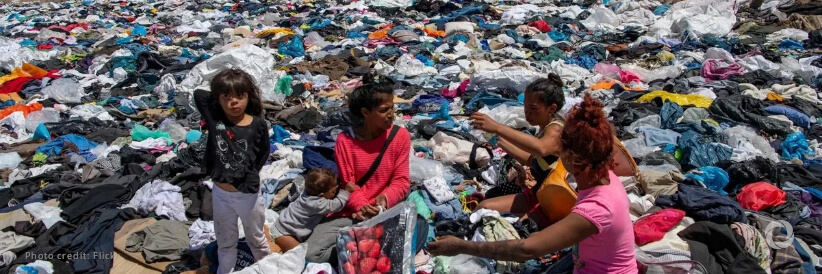Governments participating in the Global Environment Facility (GEF)-funded Integrated Programme on Eliminating Hazardous Chemicals from Supply Chains launched the six-year, $45-million initiative which is aimed at reshaping the supply chains of their fashion and construction sectors.
This effort will promote regenerative design, the replacement of non-renewable materials, resource-efficient production, responsible purchasing behaviour, and improved post-use collection. The initiative also leverages an additional $295 million from other sources to maximize impact.
The fashion and construction sectors are among the world’s most chemical-intensive industry sectors. The building and construction sector is the largest end-market for chemicals, and producing 1 kg of textiles requires 0.58 kg of various chemicals on average. Both sectors connect producers, retailers, and consumers from across the world and are characterised by complex, fragmented, global supply chains with globally significant impacts.
While much of the focus in these industries has historically centred on climate change and biodiversity, the transformation of fashion and construction supply chains requires a more holistic approach that also tackles pollution, the third prong of the triple planetary crisis.
Today’s launch event in Cambodia introduced this ambitious six-year programme, led by the UN Environment Programme (UNEP) working together with the United Nations Food and Agriculture Organization (FAO), the United Nations Development Programme (UNDP) and the United Nations Industrial Development Organization (UNIDO).
The programme will drive improvements in policy, innovation, stakeholder engagement, and access to finance across all stages of the supply chain. It will empower women, youth, and local communities by integrating indigenous knowledge, revitalizing local economies, and identifying sustainable materials and practices.
The programme will also strengthen South-South cooperation, and regional collaboration and reduce the risk of burden-shifting and transform fashion and construction from sources of environmental harm into drivers of positive change. These efforts will aim to prevent the release of 6 million tonnes of greenhouse gas (GHG) emissions and 18,750 tonnes of hazardous chemicals into our ecosystems. Releases of persistent organic pollutants into the air will be minimized, protecting air quality, while 825,000 hectares of land and ecosystems will be restored, revitalizing natural habitats. By 2031, these efforts are expected to benefit 2 million people globally.
Cambodia’s Minister of Environment says “Cambodia’s move away from LDC status provides an opportunity to enhance its industrial sectors and ensure a more sustainable economic future. By participating in the programme, Cambodia will not only safeguard the environment and public health but also strengthen its position in the global market, attract foreign investment, and create new economic opportunities for its citizens”.
Ronny Rodríguez Chaves, Costa Rica’s Vice Minister of Energy, says “Using low carbon cement and building with innovative and biobased materials like mycelium and wood are opportunities that are ripe for widescale adoption, if the enabling environment is there. As a nation committed to sustainability, we are proud to lead efforts to transform the construction sector. By focusing on access to finance and incentives, this programme will help Costa Rica become a global leader in sustainable construction”.
“This game-changing initiative exemplifies the GEF’s unique ability to bring countries and sectors together to chart a healthier, safer — and no less profitable — path,” said GEF CEO and Chairperson, Carlos Manuel Rodriguez. “We are proud to support bold leadership in the fashion and construction industries in pursuit of supply chains with fewer dangerous chemicals and lower carbon footprints. The needs here reflect how connected the world’s environmental challenges are, and how the GEF’s integrated approach to addressing pollution, climate change, and nature loss can be transformative — with fast, tangible results at the needed scale.”
The programme aims to transform every stage of the two supply chains, for example, redesigning carnival fashion in Trinidad and Tobago, establishing artisanal brick kilns in Ecuador, piloting green building certification and fashion eco-labelling schemes in Cambodia or transforming banana pseudo stem waste into economically viable and socially beneficial fibre in Pakistan.
To ensure alignment with existing initiatives and partners, a global Programme Advisory Group will be established. This group will provide strategic guidance, with senior representatives from government, industry, civil society and experts offering advice and sharing knowledge to accelerate the transition toward sustainable supply chains.

